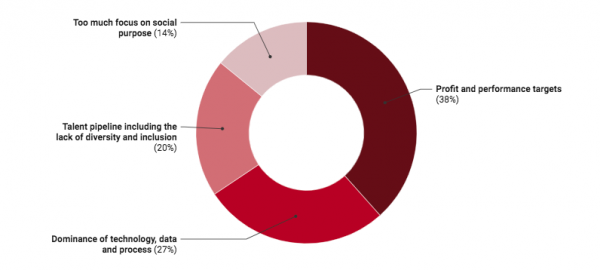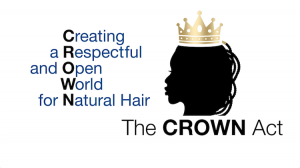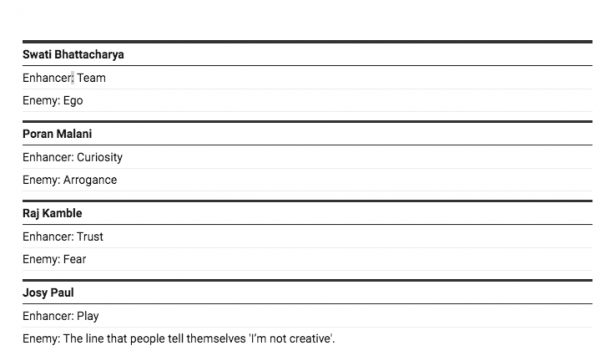
Profit and performance targets are the “biggest enemy of creativity” in advertising, according to an exclusive Campaign survey of more than 1,200 industry executives around the world.
Campaign’s editorial teams in the UK, US and Asia have teamed up as part of a new initiative, “Campaign for creativity”, which champions the magazine’s belief in the importance of creativity “to inspire people, build brands, drive innovation and transform lives”.
A three-part editorial series focuses on three key issues affecting the global advertising industry: profit vs purpose; the talent pipeline; and the dominance of technology. It will also examine both the “enhancers” and “enemies” of creativity.
This is the first part of the series, which is running on three consecutive days ahead of this month’s Cannes Lions – the biggest annual gathering of the global ad industry and the first in-person version of the festival since before the pandemic.
What is the greatest enemy of creativity?

More than one-third (38%) of readers in the global survey identified “profit and performance targets” as the biggest challenge that they face in terms of producing creative work.
About one-quarter (27%) said the “dominance of technology, data and process” was the biggest enemy of creativity. One-fifth (20%) said the talent pipeline, including the “lack of diversity and inclusion”, was the biggest challenge. Only a small percentage (14%) felt that “too much focus on social purpose” had become an obstacle to creativity.
This series launches at a pivotal time. Global ad expenditure bounced back in 2021 to above pre-pandemic levels in a sign of the industry’s creativity, resilience and ability to adapt, but there are fresh concerns about growth because of rising inflation and the war in Ukraine.
Campaign has an unrivalled international network of websites and journalists in eight key markets – Asia, China, India, Japan, the Middle East, Turkey, the UK and the US – and “Campaign For Creativity” emphasises our shared commitment to champion creativity and to hold the ad industry to account.

“People want businesses to sell good products and be good corporate citizens”
The view from Campaign UK
By Gemma Charles, deputy editor
The rise of purposeful advertising has shown no sign of abating in recent years as the pandemic and Black Lives Matter pushed social impact up the agenda. However, as more brands join the meaningful marketing stampede, the debate around profit vs purpose has intensified.
Blue-chip companies have embraced the principles of ESG (environmental, social and governance) as investors have begun to base their decisions on performance in this area. However, in the world of branding and advertising, concerns about “purpose-washing” still abound and awards time has brought with it the creep of purposeful scam ads – campaigns created with the specific goal of delighting juries rather than consumers.
In the pages of Campaign last year, Steve Harrison, a creative director and author of Can’t Sell Won’t Sell, berated ad agencies for focusing more on “saving the world” than “selling our clients’ products to our fellow citizens”.
“We should use social purpose judiciously, asking: ‘Will it help achieve my client’s fundamental need: demand generation…’ We must also realise that if there’s no sale, there’s no profit. And without profit, then the corporate commitment to CSR or ESG will, despite everyone’s laudable intentions, ebb away,” Harrison wrote.
More recently, at the start of 2022, Terry Smith, the UK fund manager and one of Unilever’s most important shareholders, claimed in a letter to his investors that the FMCG giant had “lost the plot” by attempting to “define the purpose” of Hellmann’s mayonnaise.
According to Smith, Unilever was “labouring under the weight of a management which is obsessed with publicly displaying sustainability credentials at the expense of focusing on the fundamentals of the business”.
Unilever, one of the world’s three largest advertisers, has kept its own counsel on Smith, and its company’s executives run a mile from direct questions about this tricky period. However, their defence of the longstanding shift towards what they call their “sustainable living brands” remains unbowed.
It would appear that it’s for good reason; Unilever often trumpets the stat that these brands have grown 69% faster than the rest of the business and delivered 75% of the company’s growth.
In an interview on-stage at Campaign’s Media 360 in Brighton in May, Aline Santos, Unilever’s chief brand officer and chief equity, diversity and inclusion officer, avoided responding directly to Smith’s comments but made it clear that purpose was still at the heart of its marketing strategy.
Santos highlighted several campaigning marketing examples, such as Dove’s US work on the Crown Act through the Crown Coalition.

The Crown Act (Crown stands for “Creating a respectful and open world for natural hair”) aims to ban the discrimination on the basis of hair texture that is experienced by people of colour. Devised by four black women, including a Unilever executive, Santos revealed that the act has become law in at least 15 states.
“People are losing jobs or not getting jobs because of their natural hair. So not only did we create campaigns for that with our shampoo brand, but we also created this coalition that is changing the law in the US. We are not going to stop till we have all the states in the US prohibiting any kind of these stereotypes. So it’s beyond advertising, it’s what you do behind the scenes. This is how you really connect with the communities,” she said.
Santos pointed out that Dove was one of Unilever’s fastest-growing brands and cited the latest Ipsos polling revealing that 95% of consumers expect brands to stand for social issues, while 62% said they stopped buying some brands because they didn’t share the same values.
“People are expecting you to do more than just sell a bottle of shampoo, they want to understand what you stand for,” she said.
A false dichotomy
The creative leaders Campaign spoke to agree with this and think “profit vs purpose” is a false dichotomy.
Mark Elwood, the executive creative director of Leo Burnett and a self-described “commercially minded creative”, says: “The old saying ‘your values aren’t values until they cost you something’ is being soundly tested.
“People want businesses to sell good products and be good corporate citizens; shareholders similarly want businesses to turn a profit without compromising the planet. It’s not beyond our wit to make this happen.”
For Laurent Simon, VML/Y&R’s chief creative officer, it’s key that brands make sure they are rolling out purposeful marketing for the “right reasons”.
“Consumers are quick to call out ‘purpose washing’ and with the amount of awareness around it, there’s no excuse for brands who slip up,” he says.
All the signs point to the fact that purposeful marketing is here to stay. Simon says: “Our research tells us that nearly nine in 10 people want brands to continue to be a positive influence in their lives.”
He adds: “Given that alignment with personal purpose is such a clear and growing demand from customers from brands, it’s a vital marketing ingredient that won’t go away any time soon.
“Not only does purpose drive brand awareness and build brand equity, it is a key driver of growth by opening new markets and product innovation. As an industry, we need to leave the claim that you can only achieve one or the other in the past, because it’s simply not true.”
Campaign’s global survey reinforces that view, as profit and performance targets are regarded as a far greater challenge to creativity than the growing focus on social purpose.
So, is there an inherent tension between the pursuit of profit and creativity? No, according to Elwood: “Being charged with creating ideas that not only capture people’s attention, but also change the fortunes of a business is a privilege we’d do well to acknowledge.”
“Not every brand needs a purpose beyond the need they address as a product or service”
The view from Campaign Asia
By Surekha Ragavan, editor
Balancing the competing needs of purpose and profit is an issue that boggles many marketers in Asia-Pacific, as it does the agency teams who do the work. If purpose-driven messaging drives profit, should brands leverage purpose-driven messaging to drive profit?
Based on recent Edelman Trust research conducted in the past two years, consumers are increasingly sceptical of capitalist agendas — and this sentiment extends to brands and the “good” they purport to do.
For instance, brands that shout about their sustainable operations may simultaneously run marketing campaigns to promote a culture of consumerism around their products.
Rob Beamish, creative director at TBWA Sustain in Melbourne, says that capitalism must re-engineer itself to operate in harmony with people and planet.
Purpose-driven messaging must prioritise service to humanity over anything else, he argues. From an evolutionary and anthropological perspective, humans who solved problems creatively survived, and that has come full circle given present-day calamities, according to Beamish.
“Purpose is creativity’s earliest muse,” he says. “Our most pressing problems – climate change, eco-collapse and inequality – are again existential and need creative solutions. Personally, I’ve found creativity is stimulated by purposeful problems that transcend the ego, career success and the like. We draw on something deeper and more powerful when we’re genuinely trying to make the world a little better.”
Beamish, who has worked as an environmental activist in the past decade, adds that the creative industry has a moral obligation to do good and that it should be “all hands on deck”.

One example of a brand that practises its purpose in a genuine way is Patagonia, according to Beamish. The brand’s 2013 “Don’t Buy This Jacket” campaign on Black Friday aimed to raise awareness about overconsumption and, ultimately, it managed to poach customers from less-sustainable brands.
Beamish says: “Good for Patagonia’s bottom line. Good for the environment. Good motivation for competitors to lift their game.”
A brand needs to earn its authority
However, a brand needs to earn the authority to run a Patagonia-style bold, creative-led campaign. More often than not, we see purpose campaigns that merely scratch the surface, appear to be preachy or contrived, and fail to leave a lasting impact. Hence, purpose – in a marketing sense – cannot exist without creativity.
“Purpose without creativity risks being lost in the clutter, just because a cause is worthy of attention doesn’t always translate into eyeballs in reality,” Lesley Johns, managing director of Virtue APAC, says. “Purpose, in the general sense, is definitely a friend of creativity. It provides the north star of what you’re trying to communicate, providing focus and direction as to how creativity is channelled.”
Suzy Goulding, director at MullenLowe Sustainability, is of the opinion that not all brands should align to an issue where they have no credible business reason to do so.
“Sometimes why a brand exists is simply to get dishes cleaner or to get rid of dandruff – the purpose stops there and that’s absolutely fine,” she says. “Profit and purpose aren’t in conflict with each other –companies need to make money. And not every brand needs a purpose beyond the need they address as a product or service.”
She adds that every brand seems to want to jump on a purpose bandwagon and many don’t do it well, often limited to a single campaign and judged by people who get excited by that. And, of course, it’s imperative that brands and agencies have their own house in order before executing purpose campaigns with any real credibility or conviction.
Awards juries too seem to have taken a liking to purpose campaigns, with campaigns such as “Donation dollar” by the Royal Australian Mint and Saatchi & Saatchi Melbourne and “The punishing signal” by Mumbai Traffic Police and FCB Interface scooping major wins in the past two years.
But there should be a caveat, according to Johns. “[You can’t just be] slapping your logo onto [a campaign to] win a bunch of awards. Purpose-driven work cannot just be performative and restricted to awards season. This kind of scam work is often exploitative of a chosen cause,” she says, recalling a notorious 2016 campaign for a refugee app, which won at Cannes Lions in controversial circumstances, before the winning agency handed it back. “Anyone remember iSea?”
“Profit and purpose are not mutually exclusive”
The view from Campaign US
By Alison Weissbrot, editor
Arguably, nowhere in the world is the debate about profit vs purpose so fierce as in the US, the home of Wall Street and Silicon Valley. Profit and performance are always near the top of the US ad industry’s agenda but corporate purpose has risen in importance – and come under greater scrutiny – during what has been one of the most politically charged and divided periods in the nation’s history.
There is a recognition that a purpose-centric approach to marketing can inspire bold, creative ideas and drive business success. But when brands attempt purposeful ideas without a clear vision of how that idea or cause connects back to their brand, creatives agree that it can translate into inauthentic work.
There will always be some US companies that argue that brands should focus more on communicating their product benefits and making the cash register ring than solving systemic societal issues.
General Mills, parent company to major food brands including Cheerio’s and Betty Crocker, keeps purpose manageable by looking to solve customers’ everyday problems, such as feeding their children healthier diets, as well as big societal problems like hunger.
“Purpose can become intimidating because it can feel so huge and massive that you actually don’t know where to start,” Melissa Wildermuth, global creative director at General Mills, says. “When you make purpose less intimidating, it is an amazing enabler of creativity.”
That view is shared by readers of Campaign US, in particular, in our survey, with only a small proportion saying that they felt “too much focus on social purpose” was a hindrance to creativity, while “profit and performance targets” were seen as the biggest threat.
But US advertising creatives warn that the purpose trend could go too far – perhaps even to the detriment of great ideas.
“I’ve judged all of the major awards for the last 10 years. You can tell when something is being done just because it’s following a trend or because your competition is doing it,” PJ Pereira, creative chairman at Pereira O’Dell, a full-service agency in San Francisco and New York, says. “When everyone starts to do the same thing, it loses its punch.”
The dangers of following a formula
As purpose runs the risk of becoming more performative than impactful, creative ideas and formats are losing their impact.
“There seems to be a formula to doing purpose work,” Greg Hahn, founder and chief creative officer at Mischief @ No Fixed Address, says. “What becomes familiar becomes comfortable. When you do these feel-good spots that get a good reaction in the boardroom, the question becomes, what’s the reaction outside the boardroom?”
Purpose can actually even stifle creativity when it’s at odds with profit. All brands inherently exist to make a profit, Hahn says, and brands that are known to be purposeful, such as Patagonia and REI, use purpose as a profit-driver. “I don’t see purpose and profit as mutually exclusive,” he says. “Purpose and profits have to be aligned.”
For Pereira, staggering job losses and economic pain during the pandemic have reinforced the purpose of advertising as simply keeping the economy moving and people employed.
“Keeping thousands of jobs is one of the most important purposes that one can have,” he says. “There are families and people that rely on us, and I don’t think we should feel ashamed of anything just because the message isn’t making a secondary impact in the world. Keeping the economy working, community vibrant, business operating and healthy — there is already a purpose in there.”
While brands should continue to be inspired by higher purposes, often relaying practical product benefits is the most purposeful and helpful thing they can do for consumers, especially in times of economic hardship.
“It’s always important to look at your brand’s utility and recognize and appreciate that for what it is,” Wildermuth says. “Sometimes people can mistake purpose for non-profit and cause. When that happens, there is the danger of going sideways because you don’t stay genuine to the unity and value your brand offers.”
Amid high inflation, a tight jobs market and a potential recession in the US, clients will not ditch purpose initiatives completely, but are likely to emphasise price and product benefits, while putting creative partners under more pressure to show results.
“Long-term brand building does take time,” Hahn says. “The pressures of the economy put pressures on that timeline.”

“Just being good can be boring, add a clever idea to make it infectious”
The view from Campaign India
By Raahil Chopra, editor
India is a land of opportunity for brands because the world’s fifth-largest ad market is experiencing rapid growth – advertising expenditure is set to grow 21%, the fastest rate among major markets in 2022, according to Zenith.
With such positive momentum, there is considerable confidence among Indian creative leaders that they can drive profits with purpose.
Swati Bhattacharya, chief creative officer, FCB India, says creativity and profit have to go hand-in-hand. “One of the outcomes of creativity is profit,” she explains. “It has to be an economic multiplier.”
Josy Paul, chair and chief creative officer, BBDO India, adds that creativity thrives when “enemies” such as constraints, competition and challenges show up. “For some, profit is a big motivator for creativity. For others, profit drives them differently. It all depends on what inspires you. At the end of the day, it’s not about the enemy, it’s about the opportunity,” he says.
However, Poran Malani, country director, S4 Capital, believes that even though brands are looking at more purpose-driven work, it cannot be at the expense of profit: “One of the outcomes of creativity is profit. It has to be an economic multiplier. I don’t think it is an either-or situation. The motive for creativity is and should be agnostic. Creativity can exist and thrive in both scenarios. The objective should remain the same. People are interested in how we create a meaningful idea just ahead of its time. The very heart of advertising has always been with businesses making money, which is where creativity thrives.”
Many experts have suggested that the advertising business in India is being affected by a lack of talent. Raj Kamble, founder and chief creative officer of Famous Innovations, points to profit and how it can help companies retain staff. However, he has a warning that companies can’t only follow their Excel sheet when it comes to creating work.
“There can be no creativity without profit, can there? I’ve always said, talent goes where the money is and being profitable will only help further the creative cause. The problem happens when people forget that in our business, profit is an output of creativity and not the other way around. If your work is good, your Excel sheet will work itself out. When your Excel sheet starts governing your work, both will fail,” he says.
Brands looking to “do good”
Many studies around the globe have revealed that millennials and Gen Z are more likely to buy products from brands that “do good”.
So, are we seeing more marketers delivering briefs that focus on “doing good”, rather than addressing a business goal, in the Indian market?
Both Kamble and Paul agree that even if brands look to communicate only the “doing good” bit, done correctly, it will lead to business success.
“The business goal is an outcome of the action. If you do the action [of doing good] and communicate it right, the business goal will achieve itself,” Kamble says.
Paul adds: “Occasionally, brands come to us seeking ‘profit with purpose’. Often they want to combine both – ‘doing good’, as well as achieving a business goal because sometimes it takes profit to drive the purpose.”
Malani suggests that while “doing good” used to be a corporate social responsibility cause in the past, now, with the ESG goals that many brands have signed up to, it’s become imperative for them to create a sustainable business from source to consumer.
He says: “This is a hard and big change, it is no longer about CSR, but about everyday practice and investment. There is a lot of thinking in this area and many brands are getting up to speed on their knowledge of what this means, particularly on the social side which is complicated and challenging for many brands. Unfortunately, we cannot talk about live briefs, but this is clearly the new frontier for brands and marketing.”
Bhattacharya calls for authenticity from brands and stated that it can’t be a one-off brief of doing good.
“A mainstream brand can’t fake it. You can’t create campaigns specifically for Pride Month or Mother’s Day with a ‘doing good’ message. The main purpose has to be built into the DNA of the brand. To add to that, just being good can be boring, so it needs a clever idea to become infectious,” she says.
She also calls on creative directors to be protective about the brands they work on and not cater to these one-off briefs as they could end up becoming a laughing stock on social media.
“The moment I’m working on a brand, I’m protective about it and don’t want it to suffer on social media and be laughed at. It’s my job to tell them that,” she adds.
Important causes in India
Kamble says that the most important cause post the Covid-19 pandemic is mental health and urged more brands to stand for this cause.
Beyond mental health, and building on Bhattacharya’s message of brands not faking “doing good” messages, he adds: “The second biggest wave I am seeing is one of ‘authenticity’ at the core of brand purpose – manifested in many different ways. We have entered an era where people want brands to be real and meaningful, they are tired of this fake world of social media. Living authentically will be the new mantra in culture, which brands will invariably follow.”
According to Malani, brands are looking at sustainability. “It could be a generalisation, but you see several large companies engaged in new supply chain management and leading practices. I work in the agriculture sector and I can say that India has some of the world’s most advanced sustainable farming practices in the world.”
Malani adds that, along with sustainability, gender empowerment is also in the minds of brands and marketers.
Bhattacharya signs off by stating that while the causes could be different, the most important aspect of marketing and communications remains finding a place in the heart of the consumer.
“People no longer want to say they buy the same brand as you, it’s about believing in the same brand as you,” she says.












